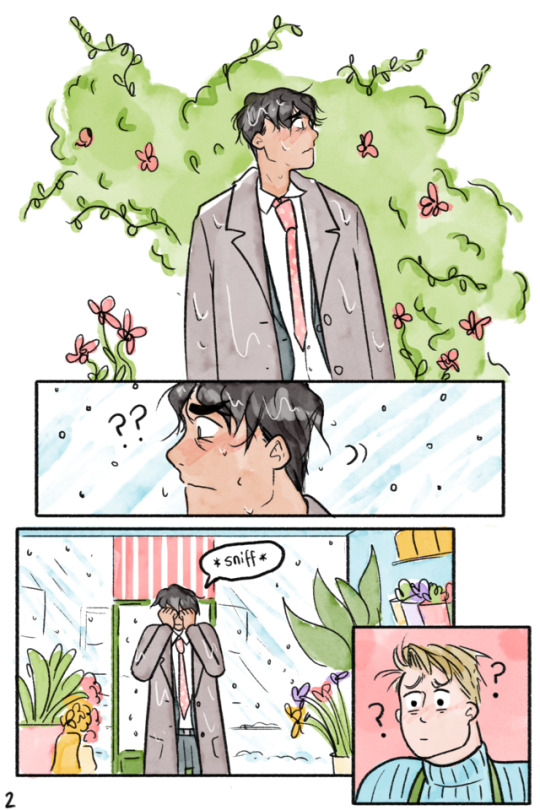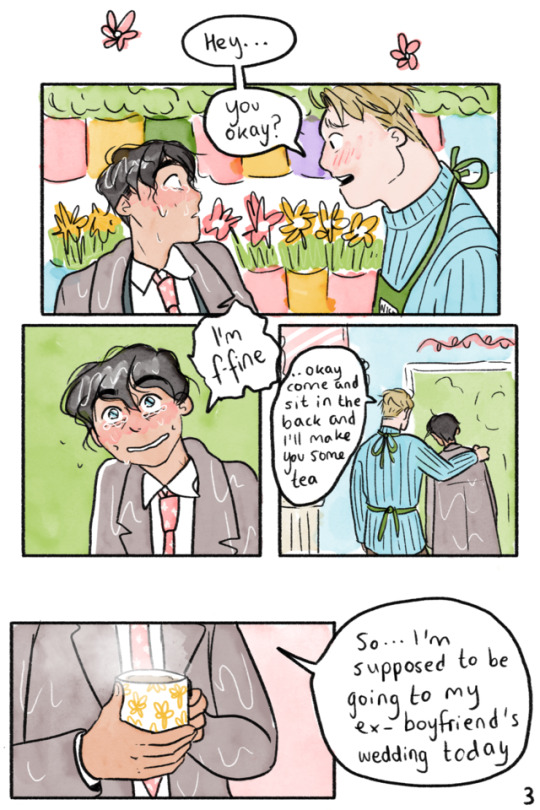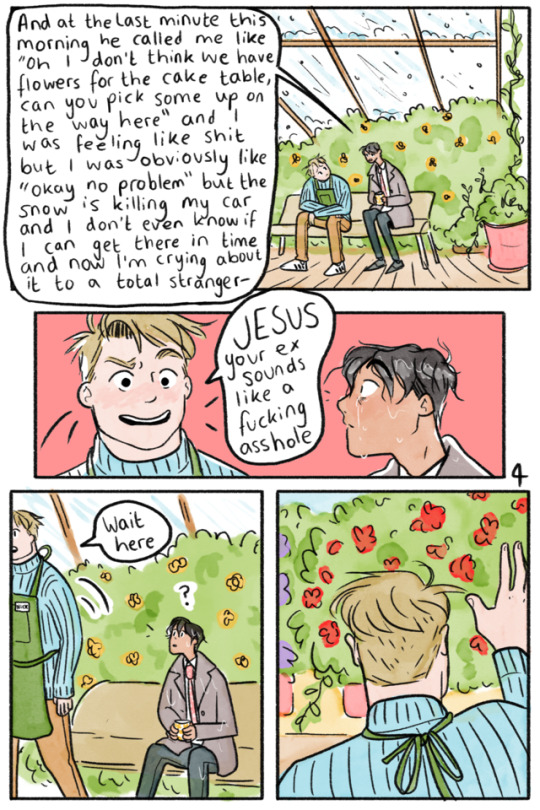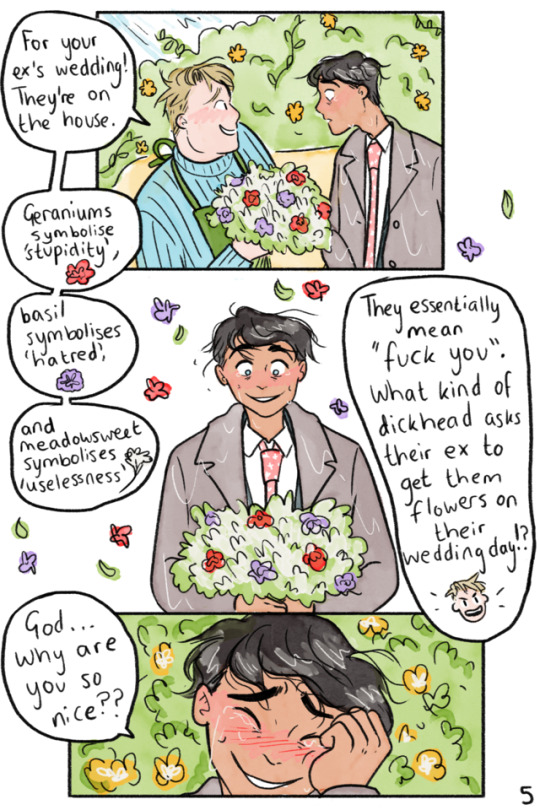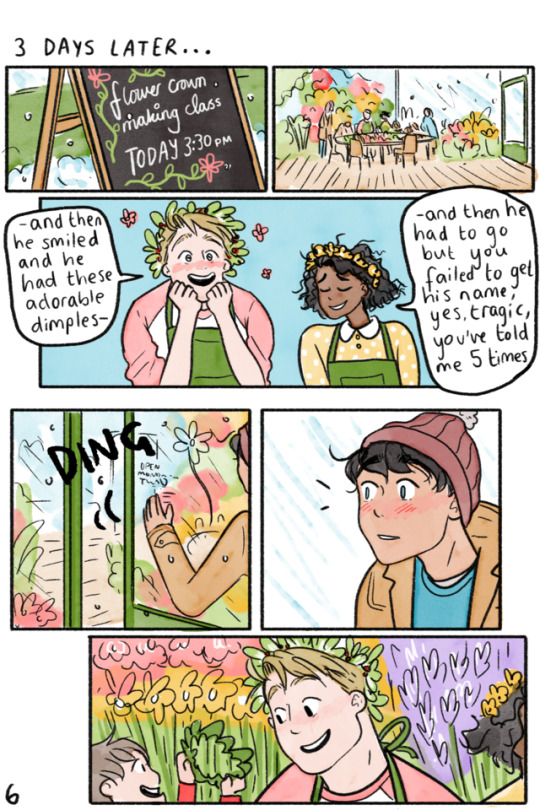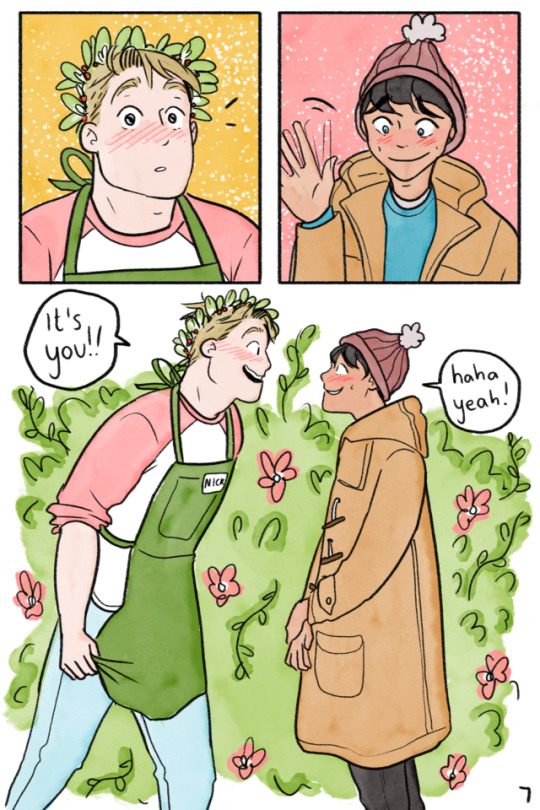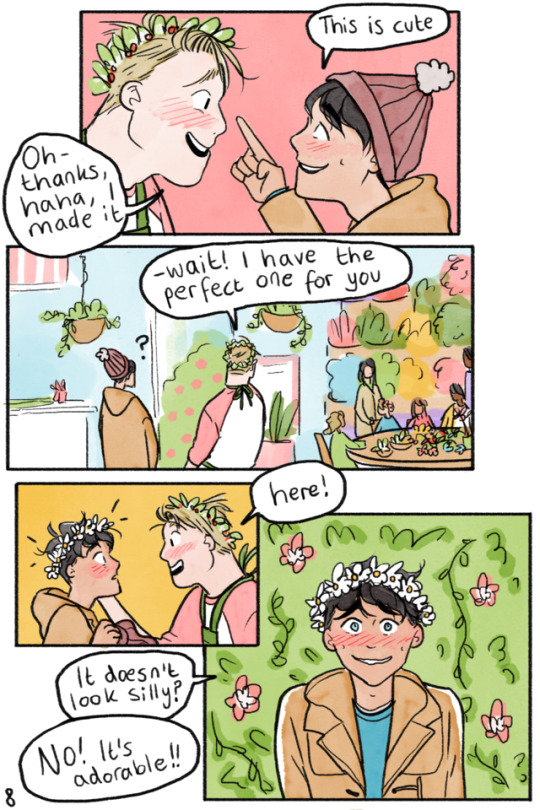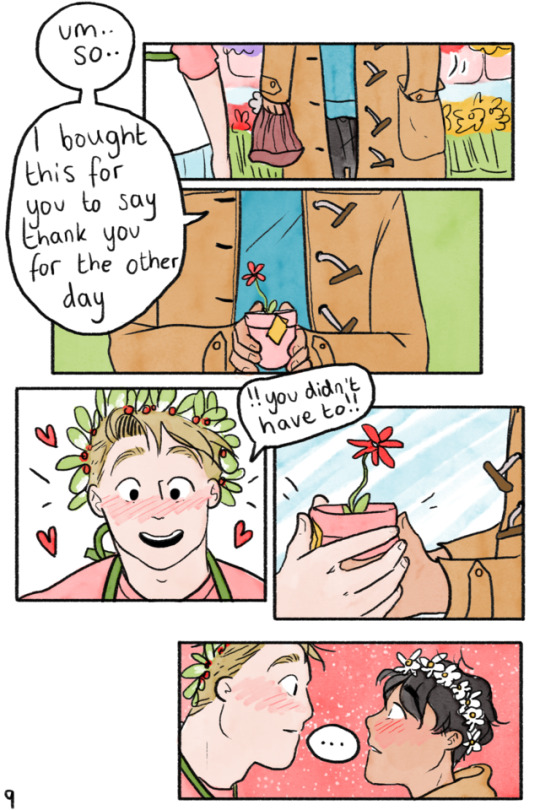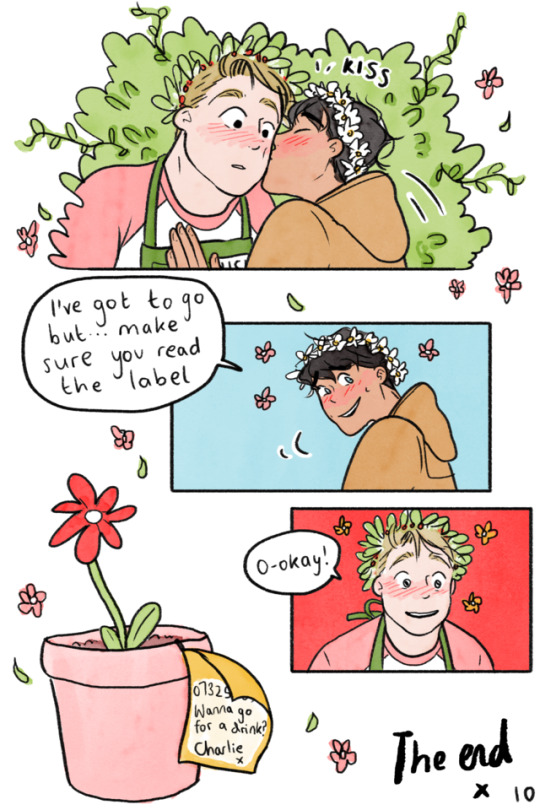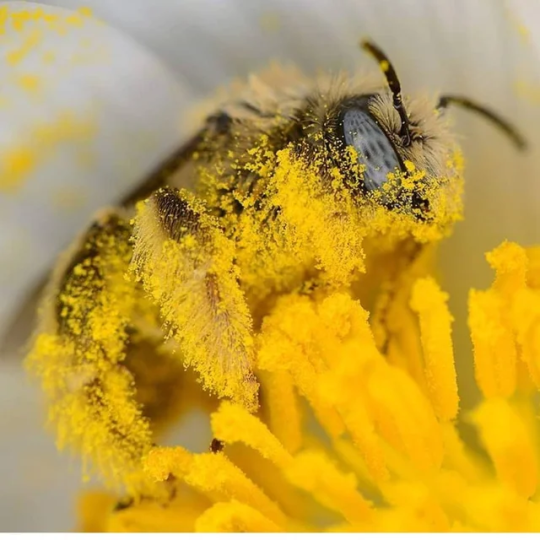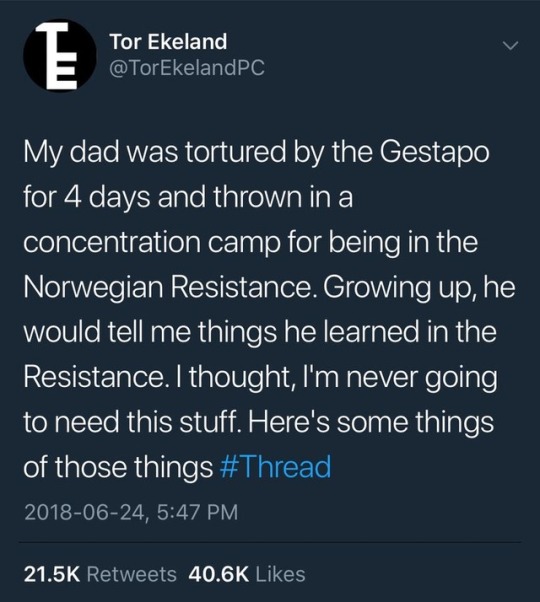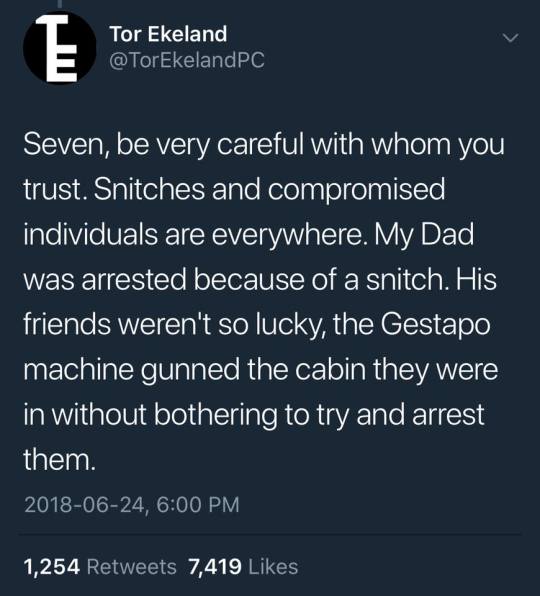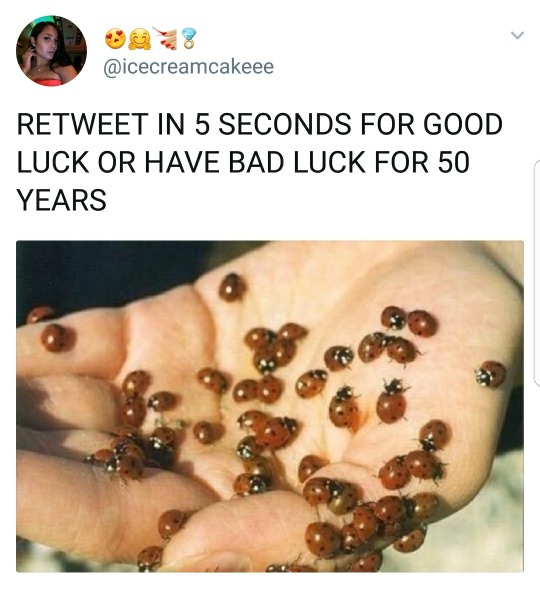Photo



Design graphics Geya Shvecova (Space processes) Archive_041219
7K notes
·
View notes
Text
A depressed guy moves into a haunted house with 7 demons, each corresponding to a deadly sin. But, they’re all trying to help him get back on his feet; Pride helps with self confidence, Lust helps him get laid, etc.
377K notes
·
View notes
Text
The Addams Family renting out rooms in their huge mansion cheaply to broke college students.
The students digging it because the craziness and the bugs are pretty much the same as any other dorm house. Also, Morticia and Gomez treat them all like visiting cousins, not like tenants to abuse and exploit.
220K notes
·
View notes
Photo




Woohoo!! 🏁💖 Here’s the comic I made for @gameon-anthology– help us unlock the next stretch goal by backing the project here! I’m so glad I got to contribute a piece to this anthology and be featured among so many insanely talented artists, be sure to support the kickstarter campaign and grab a copy for yourself!
17K notes
·
View notes
Photo
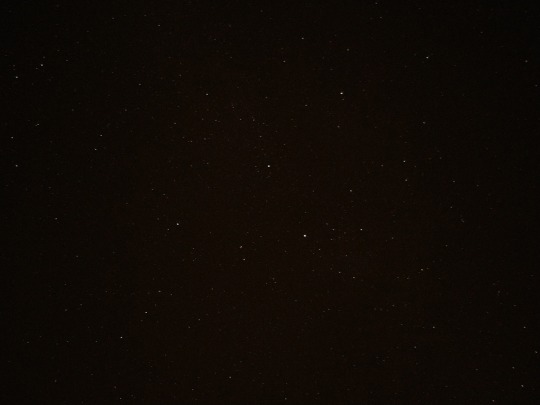
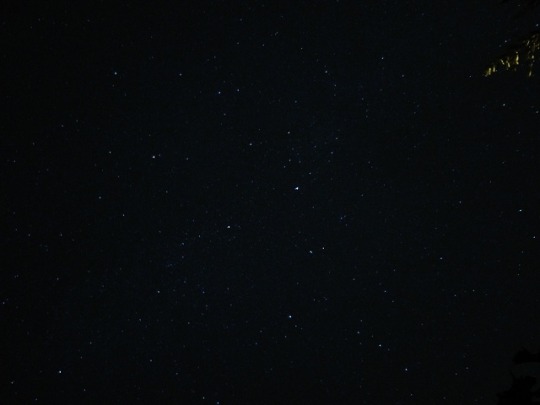
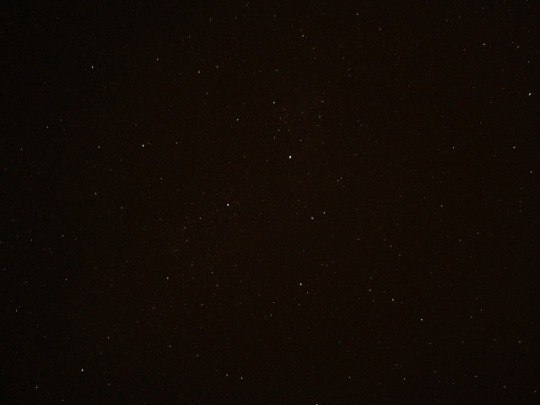
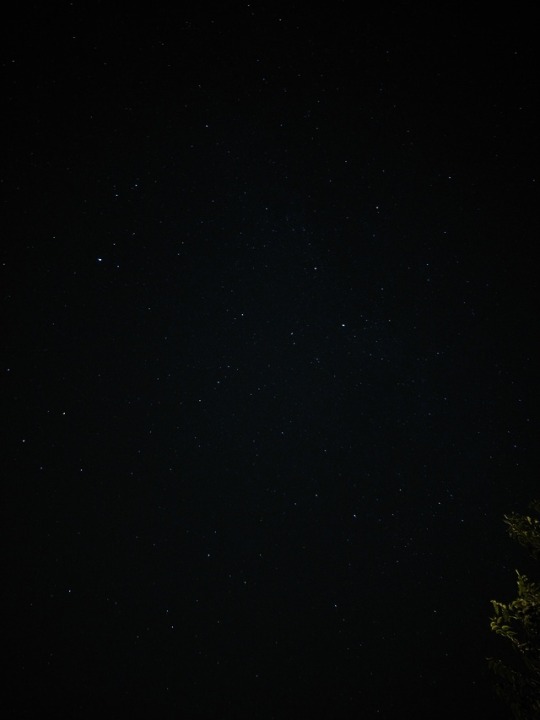
im very grateful for the lessons in photography i was taught in stop motion class because just now they made it possible to photograph the stars with my phone in spite of the camera usually not detecting the light of stars because theyre so dim,,,, enjoy these shiny motherfuckers
246K notes
·
View notes
Text
Reblog If You Can Take Off Your Bra Without Taking Your Shirt Off.
0 notes
Text
It’s a minor pet peeve, but it is everywhere today so errrr…. please keep in mind that “Rest in Peace”/RIP literally comes from a latin phrase and is a very very deeply Christian expression.
When talking about the departed, Jews say “may their memory be a blessing.”
So please, when talking about a dead person who is Jewish, try to keep in mind that RIP is a Christian phrase.
111K notes
·
View notes
Link
Sara Jacobsen, 19, grew up eating family dinners beneath a stunning Native American robe.
Not that she gave it much thought. Until, that is, her senior year of high school, when she saw a picture of a strikingly similar robe in an art history class.
The teacher told the class about how the robe was used in spiritual ceremonies, Sara Jacobsen said. “I started to wonder why we have it in our house when we’re not Native American.”
She said she asked her dad a few questions about this robe. Her dad, Bruce Jacobsen, called that an understatement.
“I felt like I was on the wrong side of a protest rally, with terms like ‘cultural appropriation’ and ‘sacred ceremonial robes’ and ‘completely inappropriate,’ and terms like that,” he said.
“I got defensive at first, of course,” he said. “I was like, ‘C’mon, Sara! This is more of the political stuff you all say these days.’”
But Sara didn’t back down. “I feel like in our country there are so many things that white people have taken that are not theirs, and I didn’t want to continue that pattern in our family,” she said.
The robe had been a centerpiece in the Jacobsen home. Bruce Jacobsen bought it from a gallery in Pioneer Square in 1986, when he first moved to Seattle. He had wanted to find a piece of Native art to express his appreciation of the region.
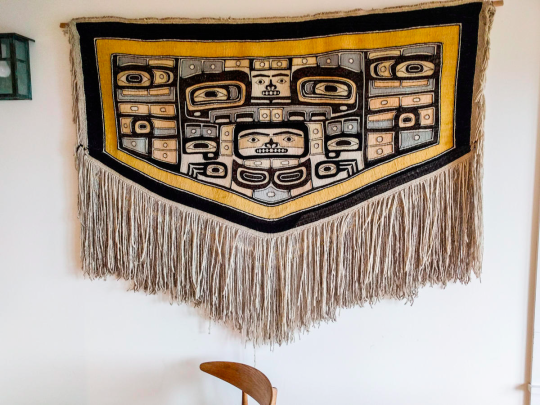
The Chilkat robe that hung over the Jacobsen dining room table for years. Credit Courtesy of the Jacobsens
“I just thought it was so beautiful, and it was like nothing I had seen before,” Jacobsen said.
The robe was a Chilkat robe, or blanket, as it’s also known. They are woven by the Tlingit, Haida and Tsimshian peoples of Alaska and British Columbia and are traditionally made from mountain goat wool. The tribal or clan origin of this particular 6-foot-long piece was unclear, but it dated back to around 1900 and was beautifully preserved down to its long fringe.
“It’s a completely symmetric pattern of geometric shapes, and also shapes that come from the culture,” like birds, Jacobsen said. “And then it’s just perfectly made — you can see no seams in it at all.”
Jacobsen hung the robe on his dining room wall.
After more needling from Sara, Jacobsen decided to investigate her claims. He emailed experts at the Burke Museum, which has a huge collection of Native American art and artifacts.
“I got this eloquent email back that said, ‘We’re not gonna tell you what to go do,’ but then they confirmed what Sara said: It was an important ceremonial piece, that it was usually owned by an entire clan, that it would be passed down generation to generation, and that it had a ton of cultural significance to them.“
Jacobsen says he was a bit disappointed to learn that his daughter was right about his beloved Chilkat robe. But he and his wife Gretchen now no longer thought of the robe as theirs. Bruce Jacobsen asked the curators at the Burke Museum for suggestions of institutions that would do the Chilkat robe justice. They told him about the Sealaska Heritage Institute in Juneau.
When Jacobsen emailed, SHI Executive Director Rosita Worl couldn’t believe the offer. “I was stunned. I was shocked. I was in awe. And I was so grateful to the Jacobsen family.”
Worl said the robe has a huge monetary value. But that’s not why it’s precious to local tribes.
“It’s what we call ‘atoow’: a sacred clan object,” she said. “Our beliefs are that it is imbued with the spirit of not only the craft itself, but also of our ancestors. We use [Chilkat robes] in our ceremonies when we are paying respect to our elders. And also it unites us as a people.”
Since the Jacobsens returned the robe to the institute, Worl said, master weavers have been examining it and marveling at the handiwork. Chilkat robes can take a year to make – and hardly anyone still weaves them.
“Our master artist, Delores Churchill, said it was absolutely a spectacular robe. The circles were absolutely perfect. So it does have that importance to us that it could also be used by our younger weavers to study the art form itself.”
Worl said private collectors hardly ever return anything to her organization. The federal Native American Graves Protection and Repatriation Act requires museums and other institutions that receive federal funding to repatriate significant cultural relics to Native tribes. But no such law exists for private collectors.

Bruce and Gretchen Jacobsen hold the Chilkat robe they donated to the Sealaska Heritage Institute as Joe Zuboff, Deisheetaan, sings and drums and Brian Katzeek (behind robe) dances during the robe’s homecoming ceremony Saturday, August 26, 2017. Credit NOBU KOCH / SEALASKA HERITAGE INSTITUTE
Worl says the institute is lobbying Congress to improve the chances of getting more artifacts repatriated. “We are working on a better tax credit system that would benefit collectors so that they could be compensated,” she said.
Worl hopes stories like this will encourage people to look differently at the Native art and artifacts they possess.
The Sealaska Heritage Institute welcomed home the Chilkat robe in a two-hour ceremony over the weekend. Bruce and Gretchen Jacobsen traveled to Juneau to celebrate the robe’s homecoming.
89K notes
·
View notes


